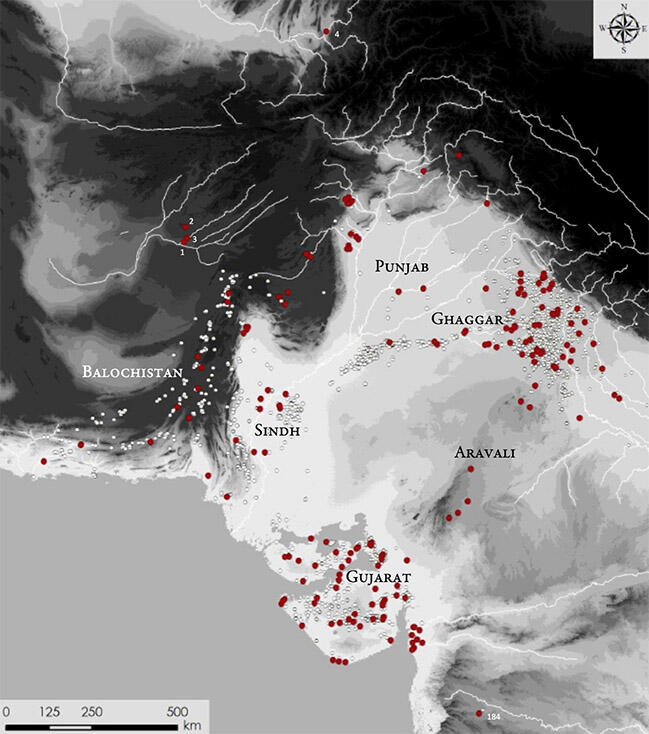An important publication by the South Asia Research Group at Kansai University in Japan that includes detailed essays covering a general picture of Indus research today (by Akinori Uesugi), Indus civilization in the Ghaggar Basin (Vivek Dangi), Indus archaeology in Gujarat (Rajesh S.V.), steatite style variations between Gujarat and the Ghaggar-Hakra Basin (Gregg Jamison) and Indus copper wares (Takekazu Nagae). The entire 220 page illustrated book, based on a conference held in June 2018, is available free for download. The essays speak to how much ancient Indus research has become focussed on areas in western India in recent years (as the map above shows, and the book is full of more detailed maps and tables showing details by province).
The individual essays are highly recommended and each deserves attention not given here on its own; the opening essay by the Editor Akinori Uesugi gives a superb overview of Indus studies so far, and where investigations into crafts, seals and other material remains and new means of studying them have led us, as well as the limitations of chronology and other factors that lead to blank spaces (for example, the recent pillaging of artifacts from Balochistan without clear provenance is undermining and understanding of its role in the pre-development of Indus civilization). As far as the environmental changes that may have impacted the decline of the civilization, Uesugi concludes with this clear and balanced statement that points to all the work that still needs to be done:
"The decline of the Indus Civilization has been one of the controversial issues of the Indus archaeology, in relation to which various hypotheses on anthropogenic or environmental factors have been proposed. Most of the theories did not have hard evidence to prove them, but the recent paleao-environmental studies have been providing the data for reconstructing environmental changes. The population shifts from the Indus Valley to the Ghaggar and Ganga Valleys during the early second millennium BCE attested in the changes of the distribution pattern of settlements (Figure 8: 8) (Teramura and Uno 2006) are likely to have been connected to the deurbanisation process. It seems that such large-scale population shifts happened due to environmental changes rather than anthropogenic factors. As one moves eastwards to the Ganga Valley, the precipitation increases, and the alluvial land with high potential for agricultural productions is encountered. The population shifts must have been associated with the changes in the settlement and subsistence patterns. While the palaeo-environmental studies are very significant in understanding the macro-scale trend in social change, the problem to be addressed is that the human or social adaptations to the environmental change have not fully been explained. It seems to be difficult to understand the decline process finally leading to the abandonment of urban centres and the writing system until the process of the changes in the society is revealed. Te Indus urban society is a highly complex one which was characterised by the extensive urban network connecting regional societies across the Greater Indus Valley and linking to the South- west Asian Civilization sphere. Te exploitation of a diverse range of resources, the productions of various commodities and crafts, the consumptions of such goods in various contexts, the flows and interactions of populations and the share of technology and ideology and so on sustained the urban society. It is likely that the decline process of such a highly complex society also entailed a number of events and changes to adapt to changing environments and to develop another form of society. However, the facts that we know about the decline process is miserably limited" (pp. 39-40).
Above: Distribution of Indus-related sites (white dots) and excavated sites (red dots) (made by the author)
Research Group for South Asian Archaeology
Archaeological Research Institute
Kansai University, Japan

